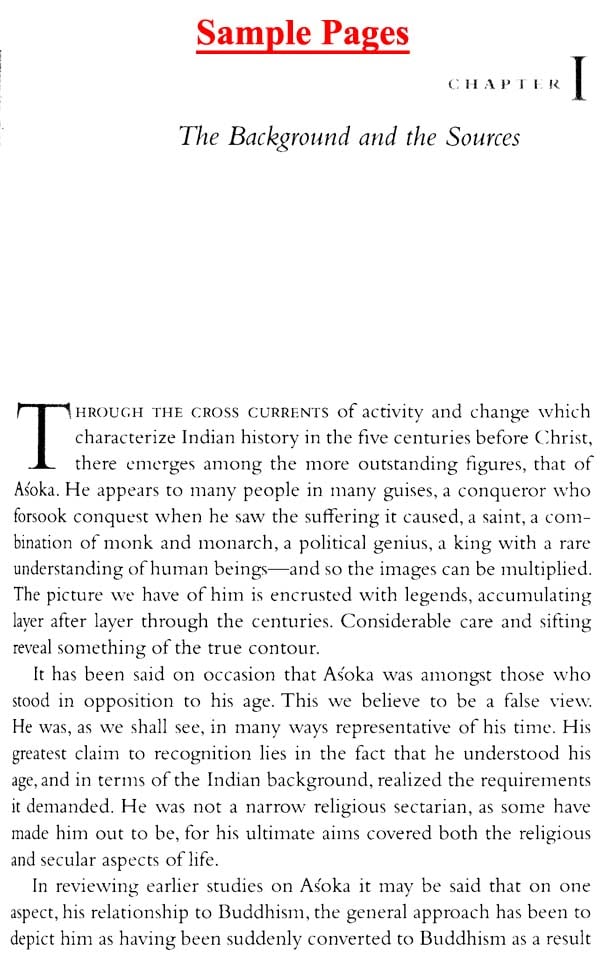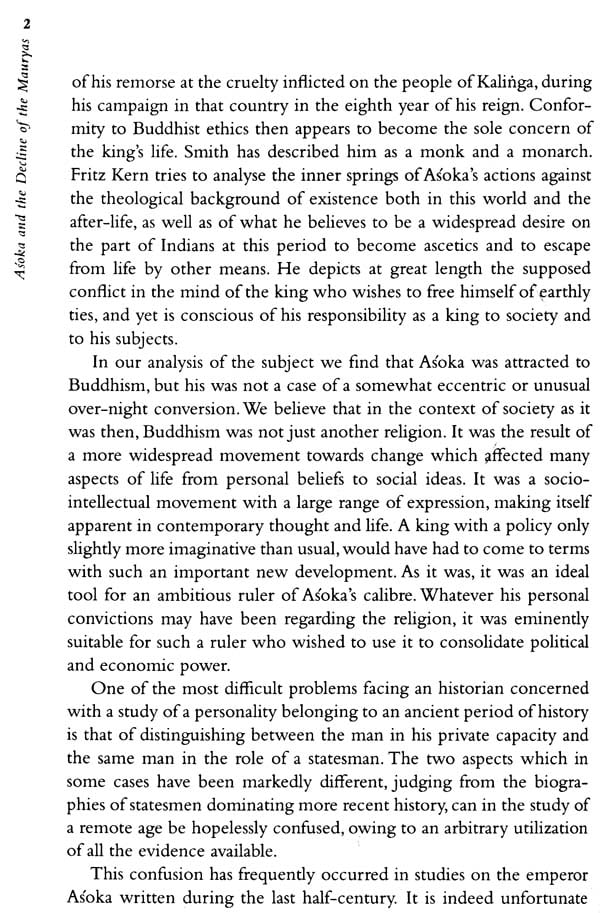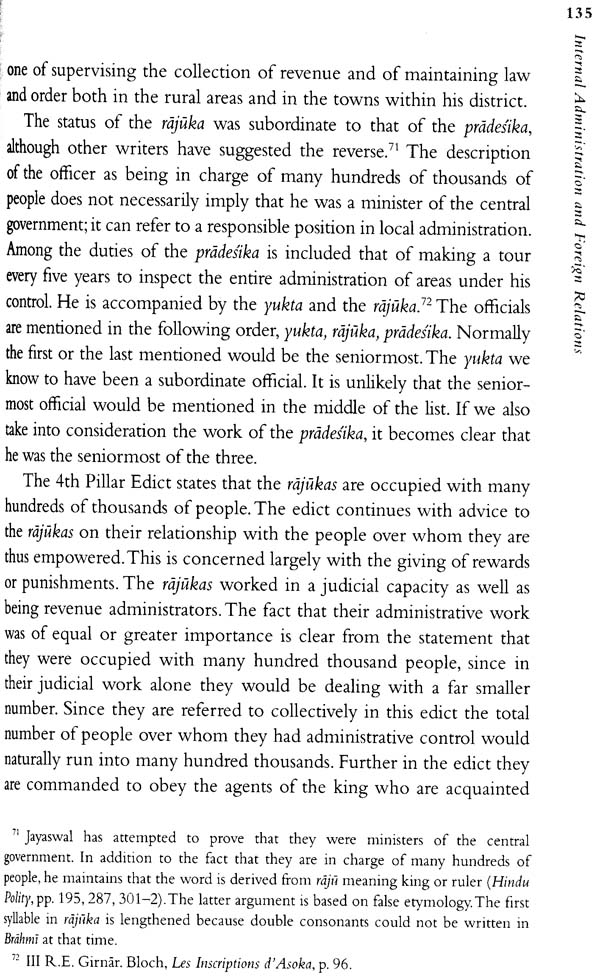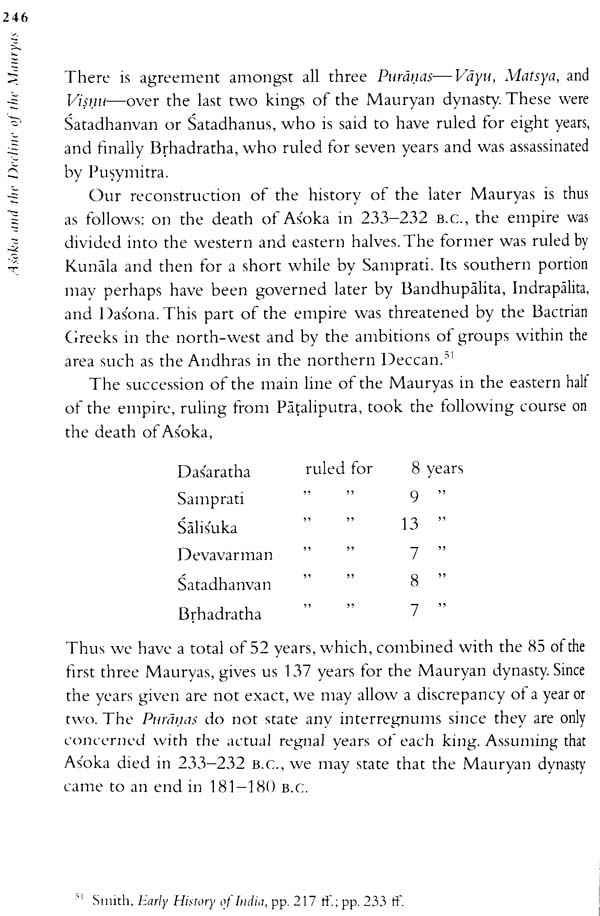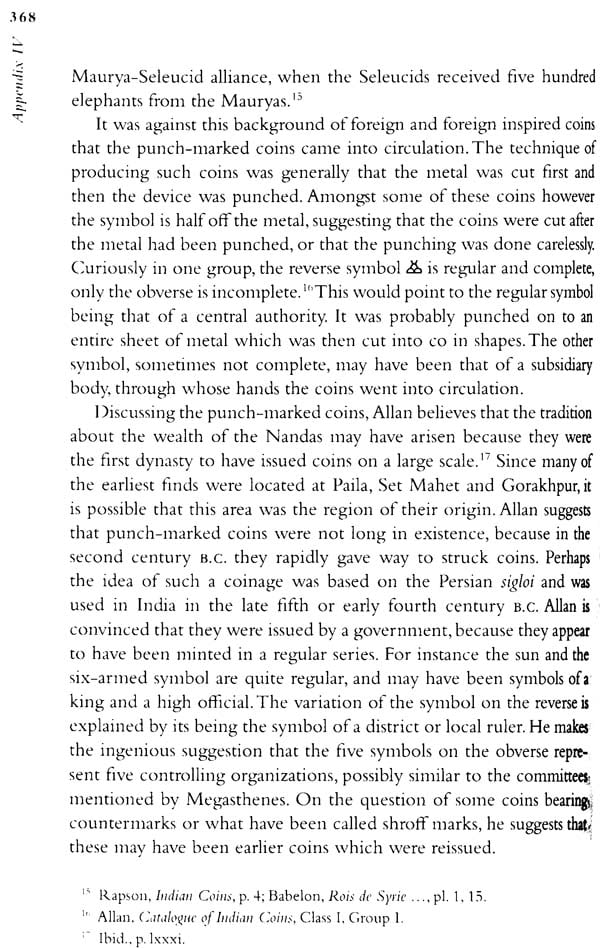
Asoka and the Decline of the Mauryas (Oxford India Perennials)
Book Specification
| Item Code: | NAC988 |
| Author: | Romila Thapar |
| Publisher: | Oxford University Press, New Delhi |
| Edition: | 2012 |
| ISBN: | 9780198077244 |
| Pages: | 474 |
| Cover: | Paperback |
| Other Details | 8.5 Inch X 5.5 Inch |
| Weight | 420 gm |
Book Description
This classic provides a comprehensive account of the history of the Mauryas with a special emphasis on the reign and activities of Asoka.
It examines the sources socio economic conditions administration Dhamma foreign relations, and the decline of the Mauryas. This edition comes with a new pre word which updates research on the subject.
This oxford India Perennials edition is testimony to the book’s status as the most authoritative work on the Mauryas since its first publication in 1961.
Romila Thapar is Prof. Emeritus at Jawaharlal Nehru University New Delhi. She is Fellow of the British Academy in 2008 she was awarded Kluge Prize for lifetime Achievement in the Humanities.
The reign of Asoka began to attract the attention of historians well over a century ago. In 1837, James Prinsep first published his work on the Asokan inscription in a series of papers. The first monograph on Asoka did not however appear until 1901 when Vincent Smith considered the subject in greater detail.
Repeated edition of Smith’s monographs brought popularity to the subject and in 1925 D.R. Bhandarkar published his Carmichael Lectures on the history of the reign of Asoka. A small study by J.M. McPhail followed in 1926:1928 saw a further study by R.K. Mookerji. Louis de la Vallee poussin published a book on the Mauryas in 1930. From then until the 1950s there was no single monograph in English on Asoka except that of B.M. Barua in 1946. this is not to suggest that historians lost interest in this particular period of Indian history. On the contrary a considerable amount of research was being done but it was largely confined to particular aspects of the Asokan age as for instance Mauryan polity numismatics philological studies of the edicts etc. Barua’s book was a compilation of all this research bringing the study up to date.
Nilakantha Sastri and his collaborarotors brought out an able study of the Nandas and Mauryas in 1952. in 1955 B.G. Gokhale brought out a study of Asoka’s relationship to Buddhism. 1956 saw an onrush of books on the subject the most useful being by P. Eggermont. A study by F. Kern appeared in the same year. A small introductory study was published by A.C. Sen to celebrate the Buddha Jayanti the Sircar has anniversary of the death of the Buddha. More recently D.C. Sircar has published a work on the Asokan inscriptions. Despite this formidable list of publications on the subject I believe that there is still scope for a reinterpretation of existing material it is this reinterpretation that I have attempted in the present study.
The reader may find a lack of consistency in the use of diacritical marks in place names. I have tried as far as possible to transliterate the lesser known names from Sanskrit or Pali, whichever is the more common form. But in the case of modern place names, I have retained the modern and more familiar spelling in order to make then easily recognizable. Sanchi for instance spelt as Sanci seems to me to unduly pedantic. In the case of Sanskrit and Pali words I have kept largely to the original forms without attempting to reduce all the words to one of the two languages.
Financial assistance in the form of scholarships an studentships from various institutions was primarily responsible for my being able to complete his study. I should like to express my appreciation for this to the international federation of University women the University of London and University College London the sir Willian Meyer Studentship.
I have been assisted during the course of my research by various scholars and colleagues both in discussion and in the translation of certain source materials. I should like in particular to thank Dr. Allchin, Prof. Dave, Dr. Goodakumbara and Dr. Marr. For reading through the typescript of the book and suggesting improvements. I should like to thank my parents and my friends Prof. J.D. Denial Dr. Sergei Horwitz, Dr. Anthony Michaelis and Mrs. Gertrude Wengraf I am happy to thank Mr. J.E. Horrabin for drawing the maps in this book. My thanks are also due to the Librarian and Staff of the school of Oriental and African Studies the commonwealth relations office library and the British Museum Library. I wish to acknowledge my gratitude to Prof. A.L. Basham for his guidance and sympathetic help throughout the period of my writing this book.
| List of Illustrations and Appendices | ix | |
| Preface | xi | |
| Preword: Asoka a Retrospective | xv | |
| I | The Background and the Sources | 1 |
| II | Early Life, Accession and Chronology of the Reign of Asoka | 25 |
| III | Society and Economic Activity | 70 |
| IV | Internal Administration and Foreign Relations | 119 |
| V | The Policy of Dhamma | 173 |
| VI | The Later Mauryas | 228 |
| VII | The Decline of the Mauryas | 247 |
| Conclusion | 267 | |
| Afterword | 273 | |
| Appendices | 338 | |
| Bibliography | 403 | |
| Index | 418 |
